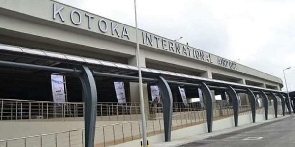SML was providing classification, valuation and price verification services for GRA Customs Division. This helped in raising revenue.
Due to the efficient services provided in raising and assuring revenue, the Honourable Minister of Finance proposed that the scope of work should be expanded to cover the petroleum downstream sector. He believed that this will resolve the issue of revenue leakages in that sector.
The leakages in this sector is due to diversion of petroleum products for re-export back to the domestic market and also under-declaration of the volumes lifted for the domestic market.
The authorities have been grappling with this problem over this period because of the inadequate knowledge by the GRA officers to appreciate volume measurements, they therefore rely on third parties (depots) for information on the volumes.
SML therefore based on its experience in providing service in revenue assurance, took up the challenge and contracted its partners in the USA for the provision of world first class electronic, digitalized, computerized fiscal metering system to monitor fuel liftings in real time.
The system installed is the first in Africa but the second in the world after USA where it is used in Houston for monitoring the petroleum products.
With this effective monitoring of the petroleum products liftings, revenue has improved and increased by more than GH₵1 Billion (One Billion Ghana Cedis) over the past 10 months as compared to the same period 2019. This is remarkable because this improvement was during the period of reduced economic activities due to the covid—19 pandemic.
The system which is Electronic Metering and Monitoring System, validates and assures the quantity of petroleum products lifted from the various depots and sites across the country in real time. The system was commissioned in June 2020 and since then, the revenue has increased tremendously.
The company deployed the Electronic Metering Monitoring System (EMMS) in May 2020 and became operational in June 2020. The system is to aid the monitoring and auditing of the petroleum liftings end to end.
For the purposes of these comparisons, we used only AGO, PMS and LPG. Due to the closure of the airports, ATK fuel is not used, kerosine and premix also give very little revenue so they have also not been included in the comparisons. These have all been excluded from the comparisons
Methodology
1.Reconciled petroleum products liftings of the Depots to the SML recordings
2.Reconciled the petroleum products liftings of NPA and SML recordings
3.Analysed the trend of growth reported to date
Reconciled petroleum products liftings of the Depots to the SML recordings
The data captured by our system showed the trend of increase over the period 2018 to date. Same months and same periods were reviewed and the trend showed that there have been increases over the period under review but there seemed to be sharp increment starting in May 2020 when SML started using its Electronic Metering system to measure the volumes lifted.
Reconciled petroleum products liftings of NPA and SML recordings
Our data on readings for the period June to December 2020 shows that the data from the NPA are about the same as that of SML. These attest to the fact that SML readings are reliable and could be depended on for the Revenue Assurance process. NPA data showed the year to year trend and the increments on comparative basis.
June 2018, 2019 and 2020 comparisons
June 2018 data compared with June 2019 data showed a decrease of total volumes from 351,158,650 litres/kgs to 335,906,386 litres/kgs. The total volume of products lifted, decreased by 15,252,264 litres/kgs. Which was 4.3% decrease over the previous year’s liftings.
June 2019 data compared with June 2020 showed an increase in total volumes from 335,906,386 litres/kgs to 419,961,550 litres/kgs. The total volume of products lifted, increased by 84,055,164 litres/kgs. Which was 25% increase over the previous year’s liftings.
July 2018, 2019 and 2020 comparisons
July 2018 data compared with July 2019 data showed an increase of volumes from 326,423,471 litres/kgs to 377,112,853 litres/kgs. The total volume of products lifted, increased by 50,689,382 litres/kgs. Which was 15.5% increase over the previous year’s liftings.
July 2019 data compared with July 2020 data showed an increase of volumes from 377,112,853 litres/kgs to 437,245,062 litres/kgs. The total volume of products lifted, increased by 60,144,209 litres/kgs. Which was 15.9% increase over the previous year’s liftings.
August 2018, 2019 and 2020 comparisons
August 2018 data compared with August 2019 data showed a decrease of volumes 353,289,750 litres/kgs to 353,108,960 litres/kgs. The total volume of products lifted, decreased by 180,790 litres/kgs. Which was 0.1% decrease over the previous year’s liftings.
August 2019 data compared with August 2020 data showed an increase of volumes from 353,108,960 litres/kgs to 423,611,590 litres/kgs. The total volume of products lifted, increased by 70,502,630 litres/kgs. Which was 20% increase over the previous year’s liftings.
September 2018, 2019 and 2020 comparisons
September 2018 data compared with September 2019 data showed an increase in volumes from 307,901,668 litres/kgs to 345,043,110 litres/kgs. The total volume of products lifted, increased by 37,141,442 litres/kgs. Which was 12.1% increase over the previous year’s liftings.
September 2019 data compared with September 2020 data showed an increase from 345,043,110 litres/kgs to 443,064,207 litres/kgs. The total volume of products lifted, increased by 98,021,097 litres/kgs. Which was 28.4% increase over the previous year’s liftings.
October 2018, 2019 and 2020 comparisons
October 2018 data compared with October 2019 data showed an increase in volumes from 359,486,045 litres/kgs to 368,238,579 litres/kgs. The total volume of products lifted, increased by 8,752,534 litres/kgs. Which was 2.4% increase over the previous year’s liftings.
October 2019 data compared with October 2020 data showed an increase from 368,238,579 litres/kgs to 403,126,745 litres/kgs. The total volume of products lifted, increased by 34,888,166 litres/kgs. Which was 9.5% increase over the previous year’s liftings.
November 2018, 2019 and 2020 comparisons>/b>
November 2018 data compared with November 2019 data showed a decrease in volumes from 367,437,634 litres/kgs to 362,909,510 litres/kgs. The total volume of products lifted, decreased by 4,528,124 litres/kgs. Which was 1.2% decrease over the previous year’s liftings.
November 2019 data compared with November 2020 data showed an increase from 362,909,510 litres/kgs to 457,773,199 litres/kgs. The total volume of products lifted, increased by 94,863,689 litres/kgs. Which was 26.1% increase over the previous year’s liftings.
December 2018, 2019 and 2020 comparisons
December 2018 data compared with December 2019 data showed an increase in volumes from 386,489,760 litres/kgs to 389,576,520 litres/kgs. The total volume of products lifted, increased by 3,086,760 litres/kgs. Which was 0.8% increase over the previous year’s liftings.
December 2019 data compared with December 2020 data showed an increase from 389,576,520 litres/kgs to 471,996,424 litres/kgs. The total volume of products lifted, increased by 82,419,904 litres/kgs. Which was 21.2% increase over the previous year’s liftings.
January 2019, 2020 and 2021 comparisons
January 2019 data compared with January 2020 data showed an increase in volumes from 367,573,210 litres/kgs to 372,275,040 litres/kgs. The total volume of products lifted, increased by 4,701,830 litres/kgs. Which was 1.3% increase over the previous year’s liftings.
January 2020 data compared with January 2021 data showed an increase from 372,275,040 litres/kgs to 432,074,195 litres/kgs. The total volume of products lifted, increased by 59,799,155 litres/kgs. Which was 16.1% increase over the previous year’s liftings.
February 2019, 2020, and 2021
February 2019 data compared with February 2020 data showed an increase in volumes from 344,977,500 litres/kgs to 368,970,381 litres/kgs. The total volume of products lifted, increased by 23,992,881 litres/kgs. Which was 7.0% increase over the previous year’s liftings.
February 2020 data compared with February 2021 data showed an increase from 368,970,381 litres/kgs to 429,333,133 litres/kgs. The total volume of products lifted, increased by 60,362,752 litres/kgs. Which was 16.4% increase over the previous year’s liftings.
March 2019, 2020 and 2021
March 2019 data compared with March 2020 data showed an increase in volumes from 359,443,769 litres/kgs to 366,719,730 litres/kgs. The total volume of products lifted, increased by 7,275,961 litres/kgs. Which was 2.0% increase over the previous year’s liftings.
March 2020 data compared with March 2021 data showed an increase from 366,719,730 litres/kgs to 480,550,281 litres/kgs. The total volume of products lifted, increased by 113,830,551 litres/kgs. Which was 31.0% increase over the previous year’s liftings.
Revenue comparisons for period June 2019 to March 2020 and June 2020 to March 2021
The volume increases as stated above for June 2019 to March 2020 as compared with same period, June 2018 to March 2019 is 125,705,432 lts/kgs which amounted to GH₵ 200,430,315. The volume increases as stated above for June 2020 to March 2021 as compared with same period June 2019 to March 2020 is 752,460,780 lts/kgs which amounted to GH₵ 1,072,424,786.
This shows a remarkable increase of GH₵ 1,072,424,786 in revenue for the period of ten (10) months since the introduction of the monitoring system. This has impacted on the revenue recorded in the ICUMS for the same period.






















The statistics for the period under review compared with previous periods showed the following increments over the years:
Period % increase
June 2018 and June 2019(NPA/GRA) -4.3
June 2019 and June 2020(SML) 25
July 2018 and July 2019(NPA/GRA) 15.5
July 2019 and July 2020(SML) 15.9
August 2018 and August 2019(NPA/GRA) -0.1
August 2019 and August 2020(SML) 18.9
September 2018 and September 2019(NPA/GRA) 12.1
September 2019 and September 2020(SML) 28
October 2018 and October 2019(NPA/GRA) 2.4
October 2019 and October 2020(SML) 9.5
November 2018 and November 2019(NPA/GRA) -1.2
November 2019 and November 2020(SML) 26.1
December 2018 and December 2019(NPA/GRA) 0.8
December 2019 and December 2020(SML) 21.2
January 2019 and January 2020(NPA/GRA) 1.3%
January 2020 and January 2021(SML) 16.1%
February 2019 and February 2020(NPA/GRA) 7.0%
February 2020 and February 2021(SML) 16.4%
March 2019 and March 2020(NPA/GRA) 2.0%
March 2020 and March 2021(SML) 31.0%
Apart from the July 2018, 2019 and 2020 comparison which showed a marginal increase, the other periods have shown significant increases as compared with the previous years’ performances. June 2018 compared with 2019 showed an increase of 4.5% whilst June 2019 compared with June 2020 showed an increase of 25%. This is very significant.
Similarly, September 2018 compared with 2019 showed an increase of 12.1% whilst September 2019 compared with September 2020 showed an increase of 28%.
This pattern can be attributed to effective monitoring by the introduction of the Electronic Monitoring system by SML and the vigilance of the GRA Customs officers.
It is noteworthy that this is the time when some industries are either shut-down or working limited capacity due to the covid-19 pandemic and yet petroleum volumes are increasing.
The borders have been closed and therefore there is not full movement of vehicles as compared with previous years.
Also, schools are not opened, meaning there are less vehicles on the streets requiring petroleum products.
Also, churches are not fully functional.
Fewer people travel to funerals due to the social distancing protocols in place.
With all these situations, it is very clear that monitoring is what has caused the increase.
These increases in petroleum products volumes were processed through the ICUMS and therefore ICUMS will show significant increase in taxes and duties paid. The boost in the revenues in the ICUMS can significantly be traced to the increase in petroleum revenue which has increased due to the effective monitoring system put in place by SML.
Press Releases of Monday, 12 April 2021
Source: Strategic Mobilisation Ghana Ltd













